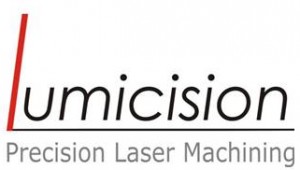Laser cutting in automotive industry

Laser cutting in automotive industry
The automotive industry is a huge industry that covers everything from designing, developing, manufacturing and manufacturing cars to testing, marketing and selling them.
Hundreds of thousands of sectors, pieces and individuals are involved in every step of the process. It may seem complicated to build a safe and convenient road, despite the very proven processes involved.
Laser cutting is a process used at various stages of automotive industry to ensure that the vehicle is completely safe and reliable for the consumer. In this post we have reviewed this issue in more detail.
In the Lumicision , all laser cutting services are based on a variety of materials and other services such as bending, welding, turning, etc. in modern fashion with the best and most up to date machines in the world. For more information on laser cutting or ordering in Lumicision, please contact us

Laser engraving in automotive industry
The background to the automotive industry
The automotive industry itself is a well-lubricated machine from the beginning to the end just like the cars it produced. The first car was produced in the 1980s, and then it took decades to become a major part of society.
Today, around 80 million vehicles are sold worldwide every year, about 220,000 cars per day. It is clear that this volume is high and there is a need to take steps to ensure the quality of these cars. In addition, each car has an average of 30,000 pieces, which means about 6,600,000 pieces per day. Therefore, the importance of having reliable and efficient processes can not be ignored. That’s why laser cutting is very valuable to the automotive industry.
Why is laser cutting used in automotive industry?
Laser cutting is one of the most useful processes in the automotive industry and any other industry. This process involves cutting the materials and shapes to the desired size, and this is an application widely used to produce sophisticated products.
Although laser cutting itself is a unique alternative to other traditional cutting techniques in the market. Perhaps the biggest advantage of laser cutting is that it enables you to make accurate payments and smooth edges, and have a better finished product and less material waste. Laser cutting energy consumption is very low and its maintenance costs are low. It also has several applications and reduces the time consuming.
Ultimately, this process is one of the safest processes. Laser cutting is required to be tight in a lightbox. While using more traditional methods than a cutting blade for cutting. While steps have been taken to ensure that traditional methods are safe, laser cutting creates this security in the factory’s production space and no longer needs to worry about its security.
How is laser cutting used in the automotive industry?
Given the benefits and features mentioned above, it’s not surprising that laser cutting has many applications in the automotive industry. Here are some of these applications:
Laser cutting of auto parts
Today, car design and production are not like old cars. The parts and components that are already present are much smaller and more complex, such as the antenna hole, and laser cutting is the most prestigious and efficient process for this.
Laser cutting of hydro-formed parts
Hydro-formed parts, which are three-dimensional metal parts, are essential for any type of vehicle. Laser cutting is one of the best processes for cutting these parts with high precision.
Laser cutting of air bags (airbags)
One of the biggest advantages of laser cutting is that it can be used in addition to metal for other materials as well. This material can be airbags. Of course, the blades that exist in the traditional way can also cut the fabric, but using laser cutting can cut the edges quickly without causing any wear.
Looking for more information on laser cutting?
As you can see in this short post, laser cutting is one of the most valuable parts of the automotive industry, and one of the reasons why our vehicles today are high on the road.
But due to the multi functional nature of laser cutting, the automotive industry is not the only one used, but also in industries such as aerospace, electronics, medicine and semiconductors. You can contact us for more information about this process.
